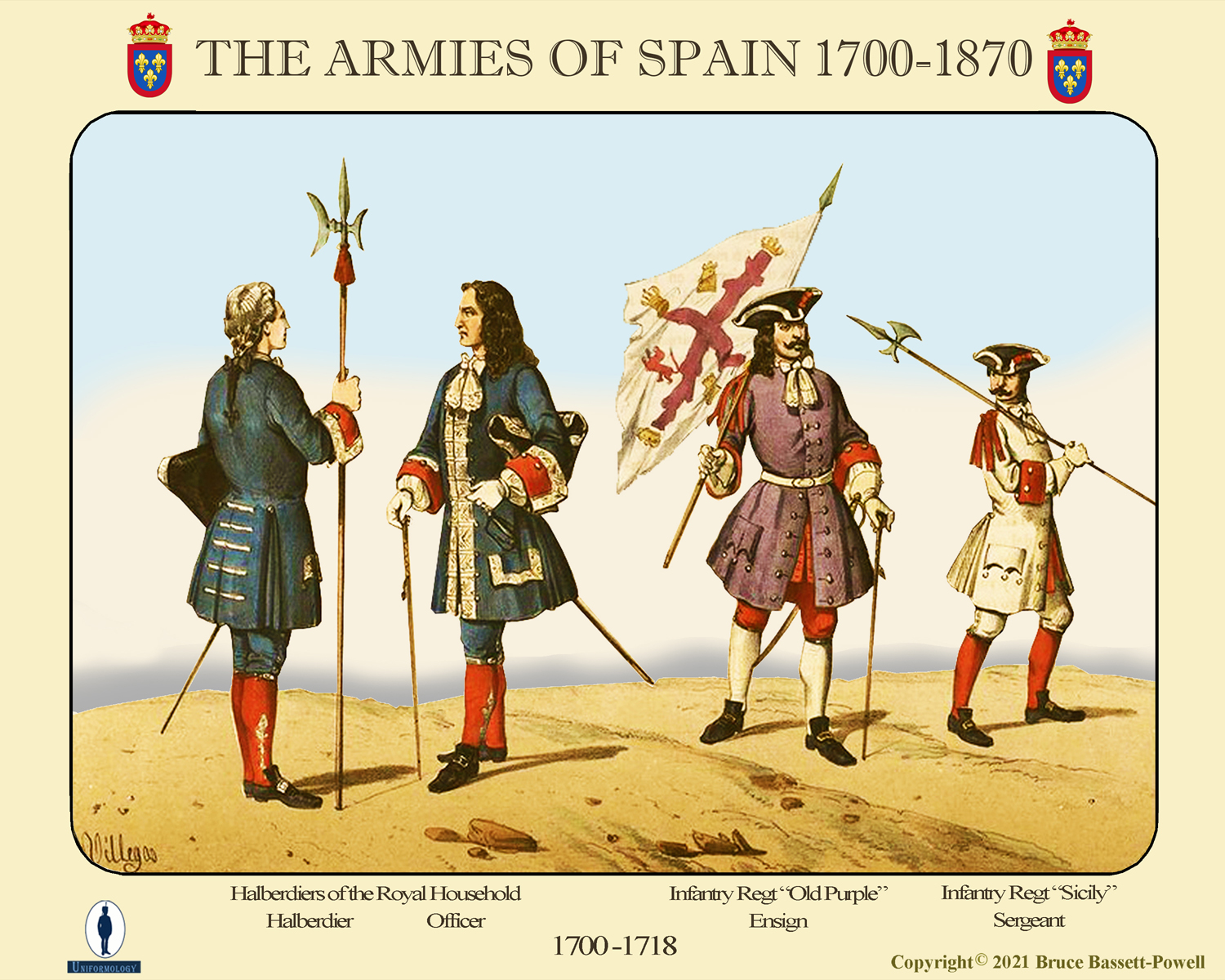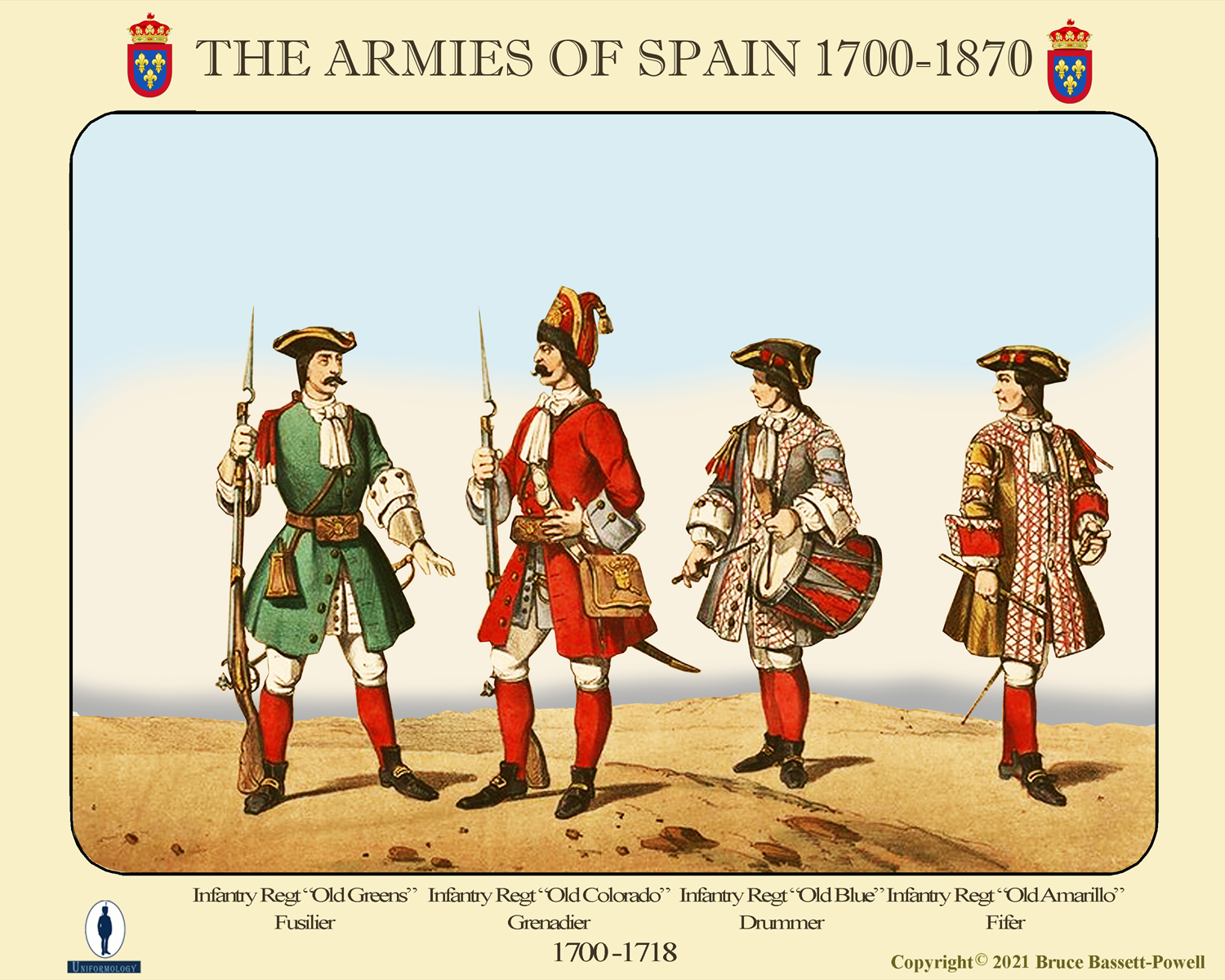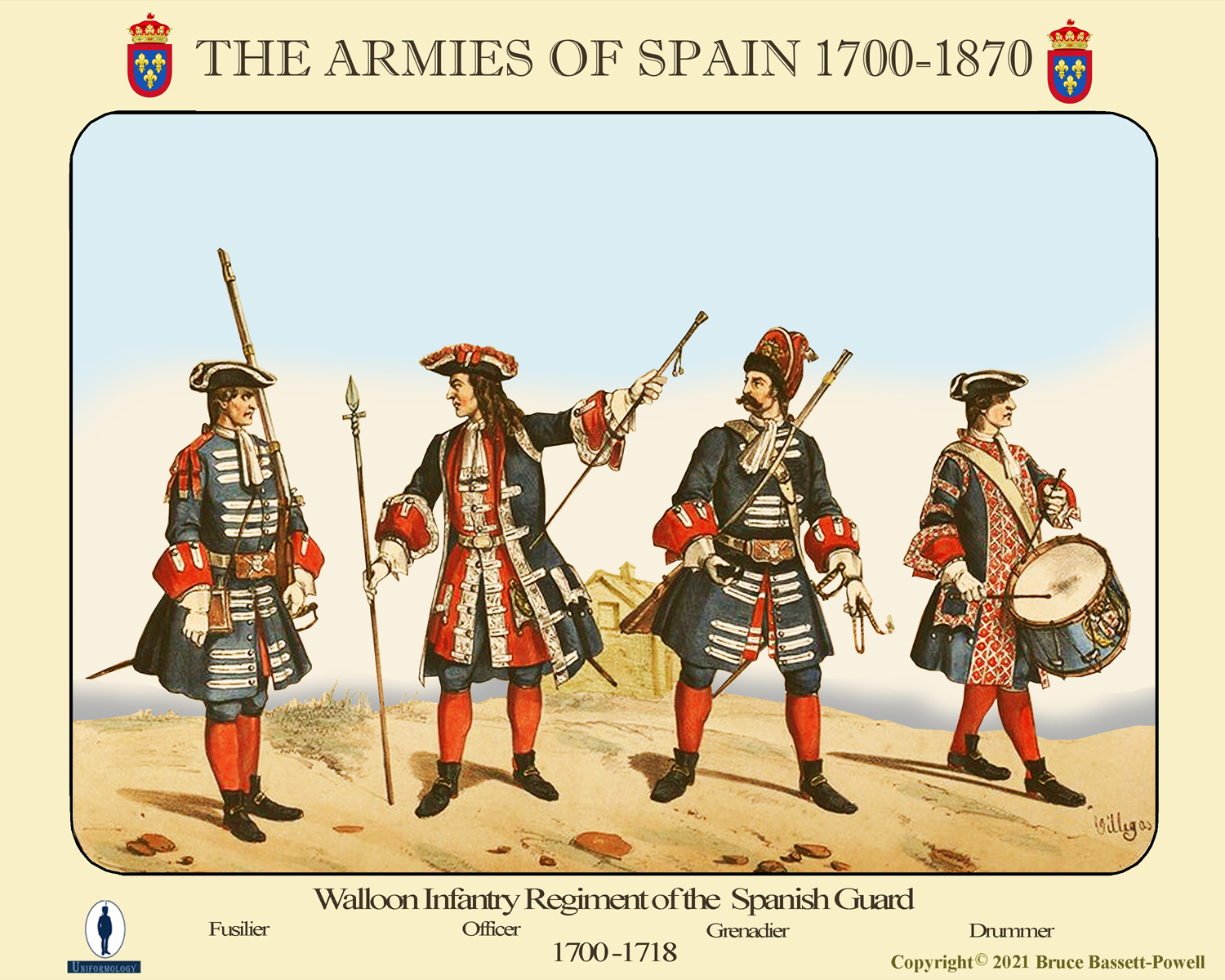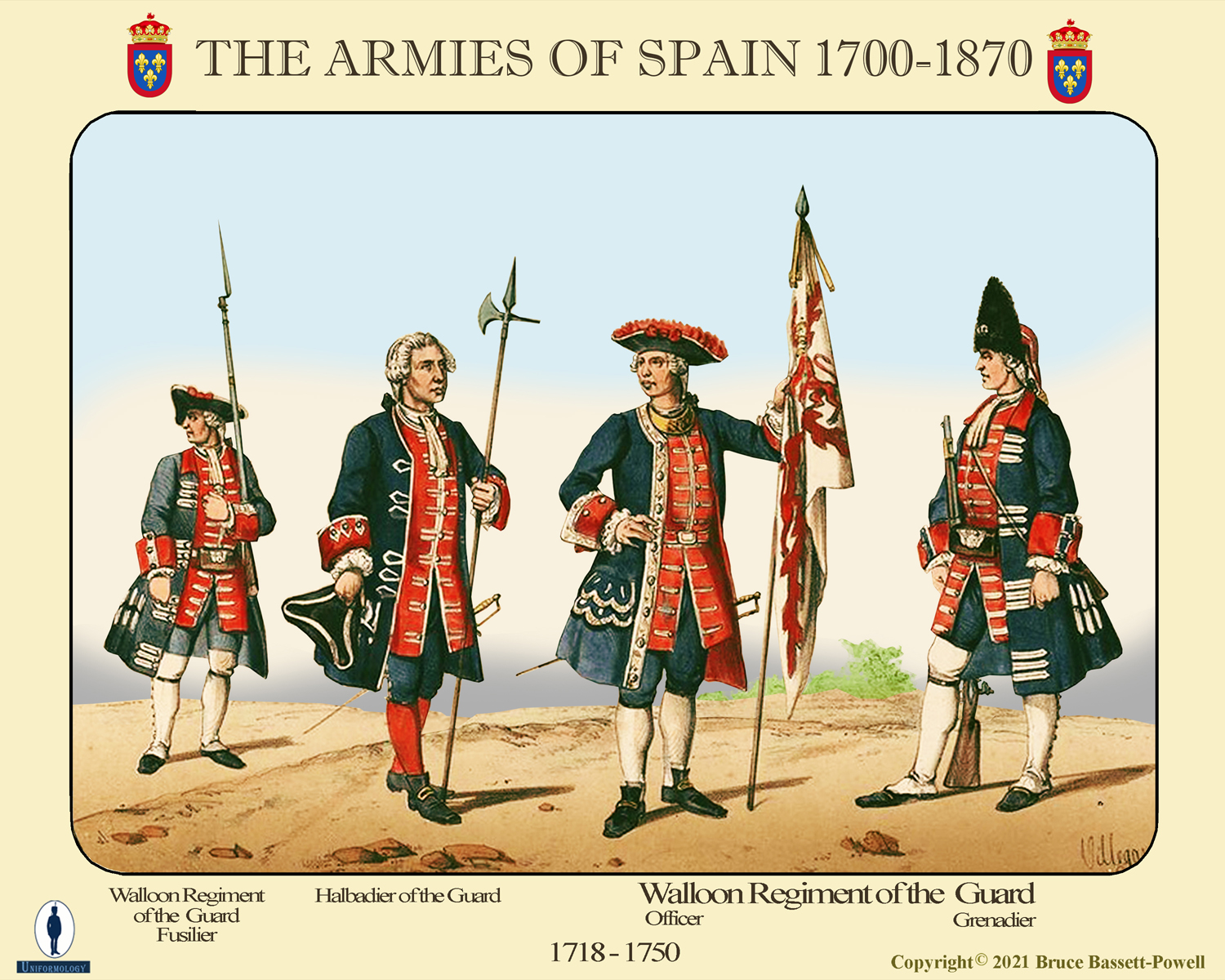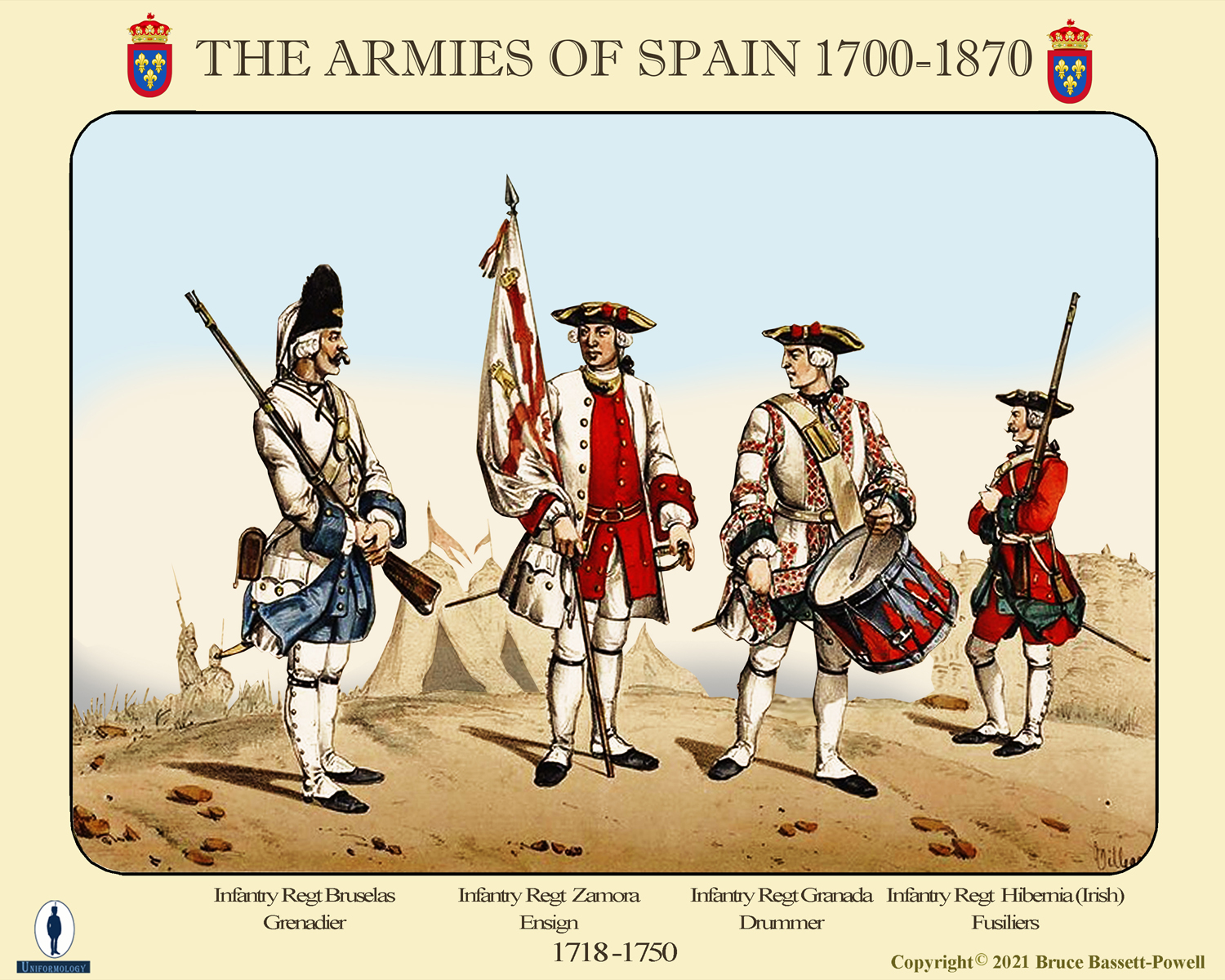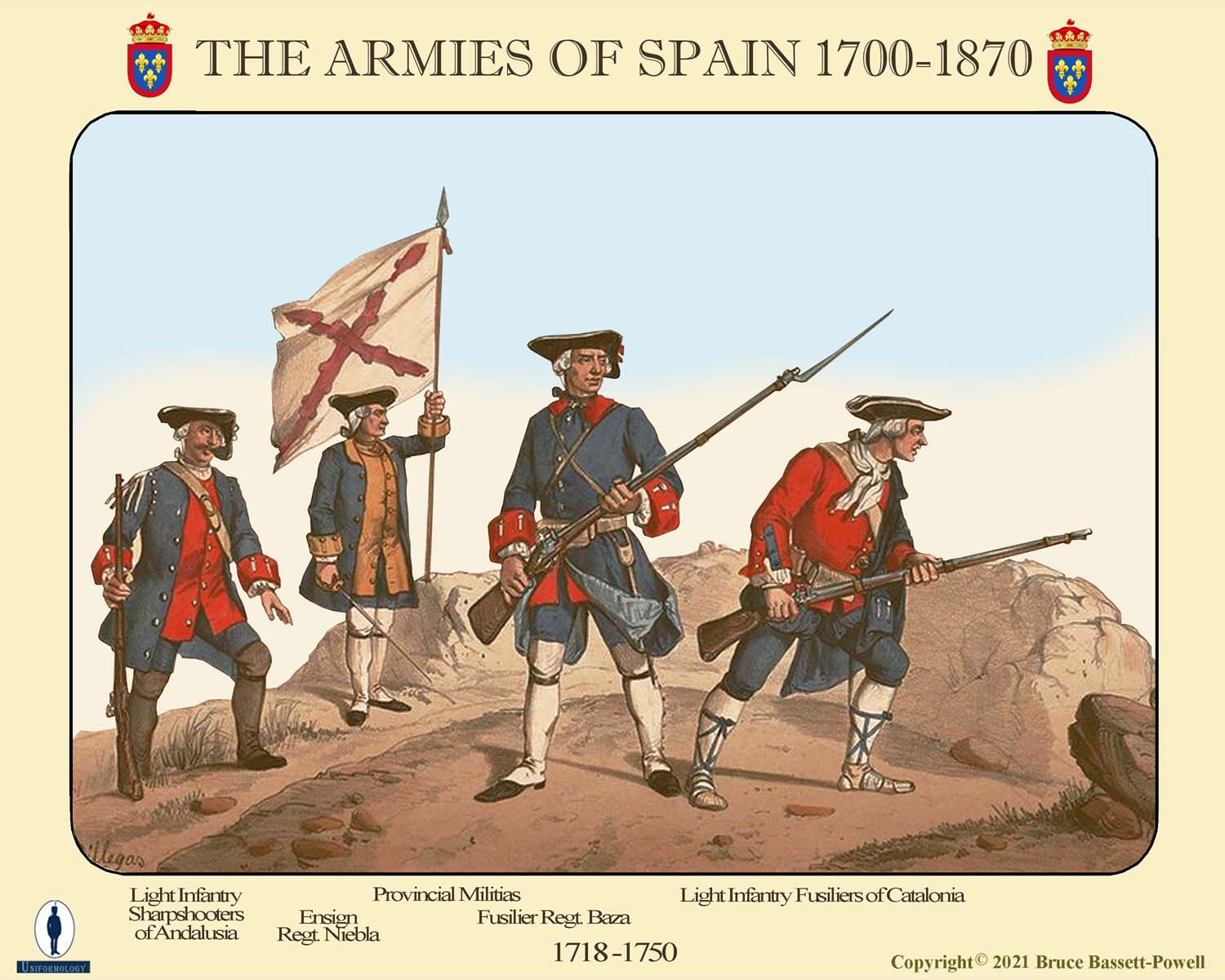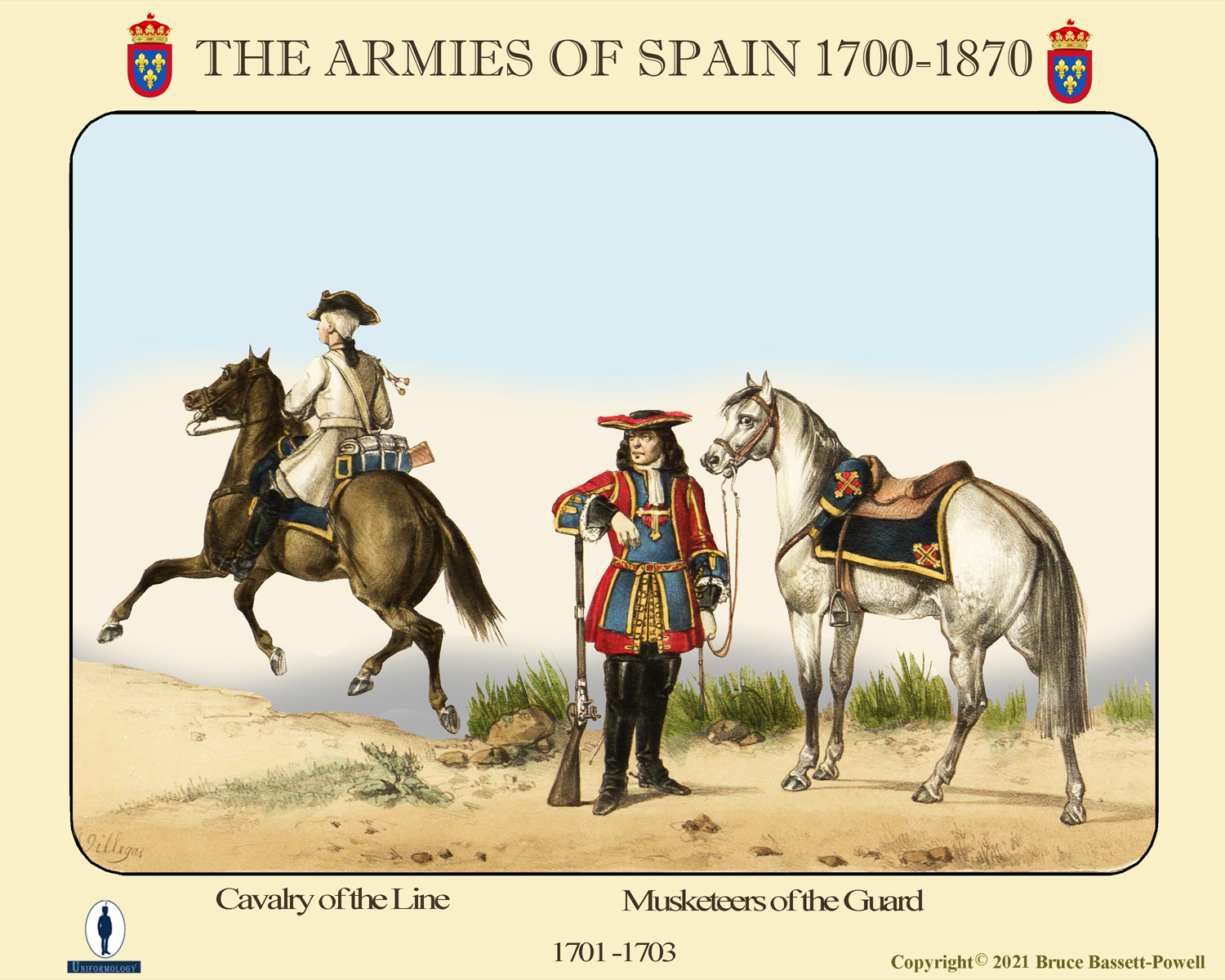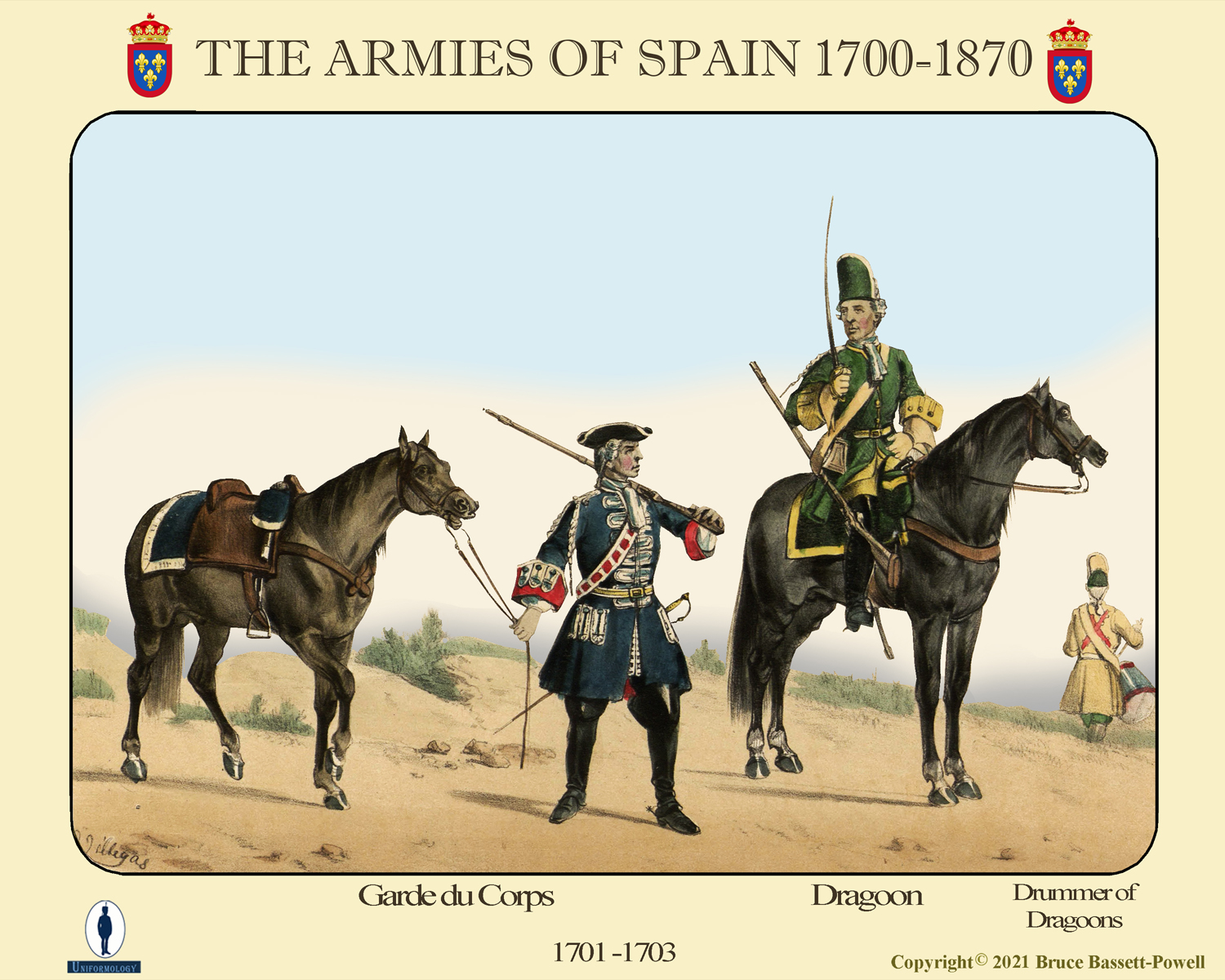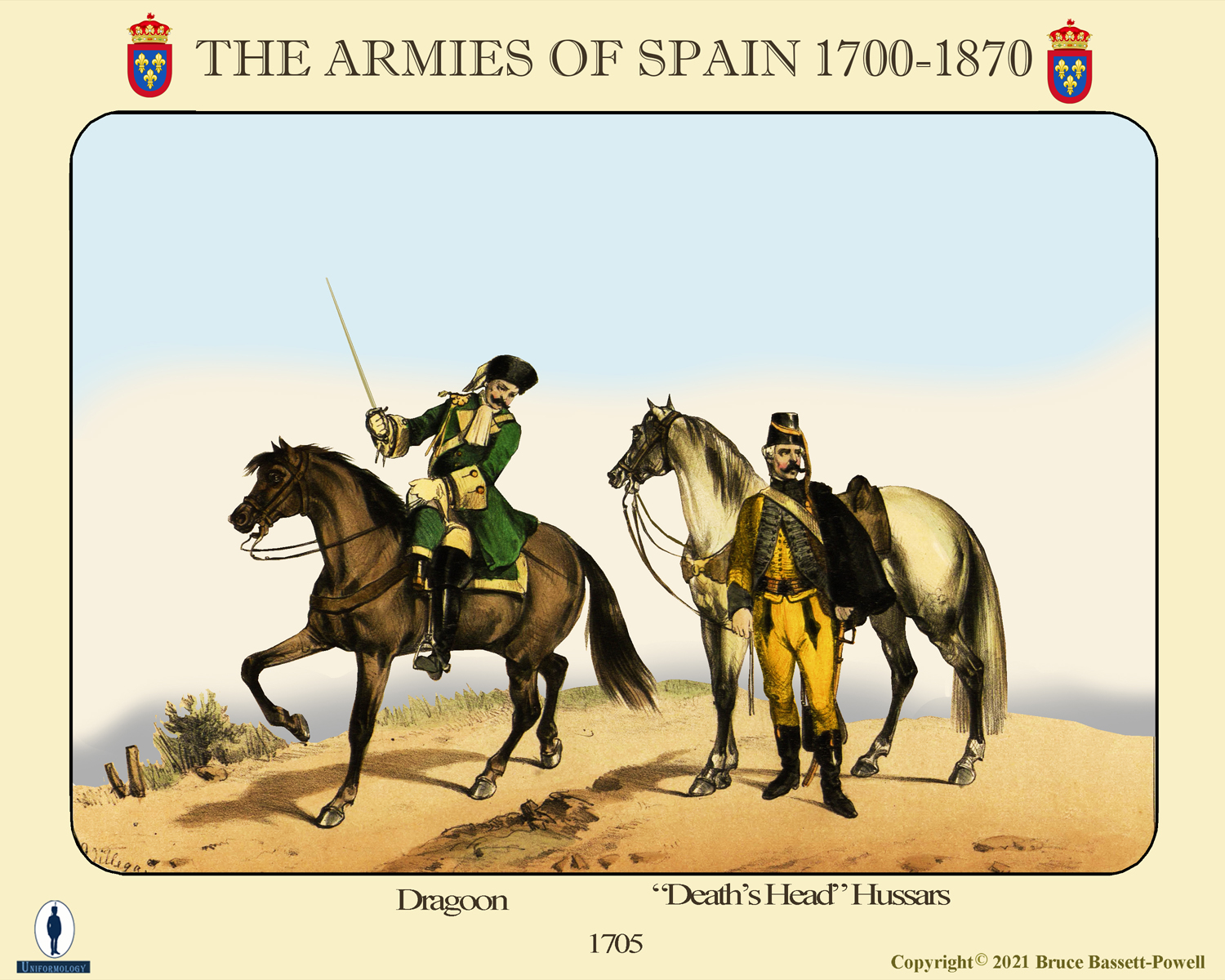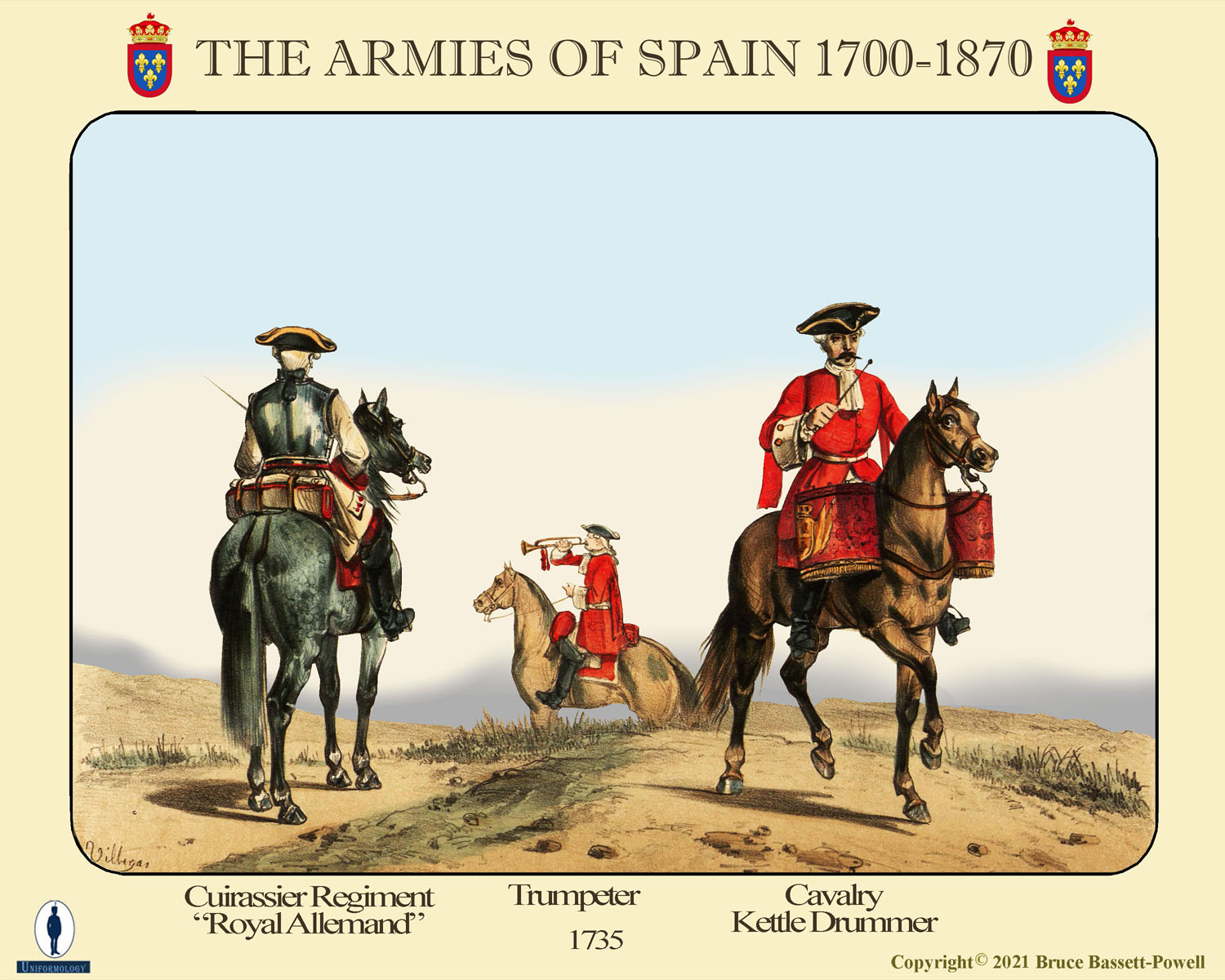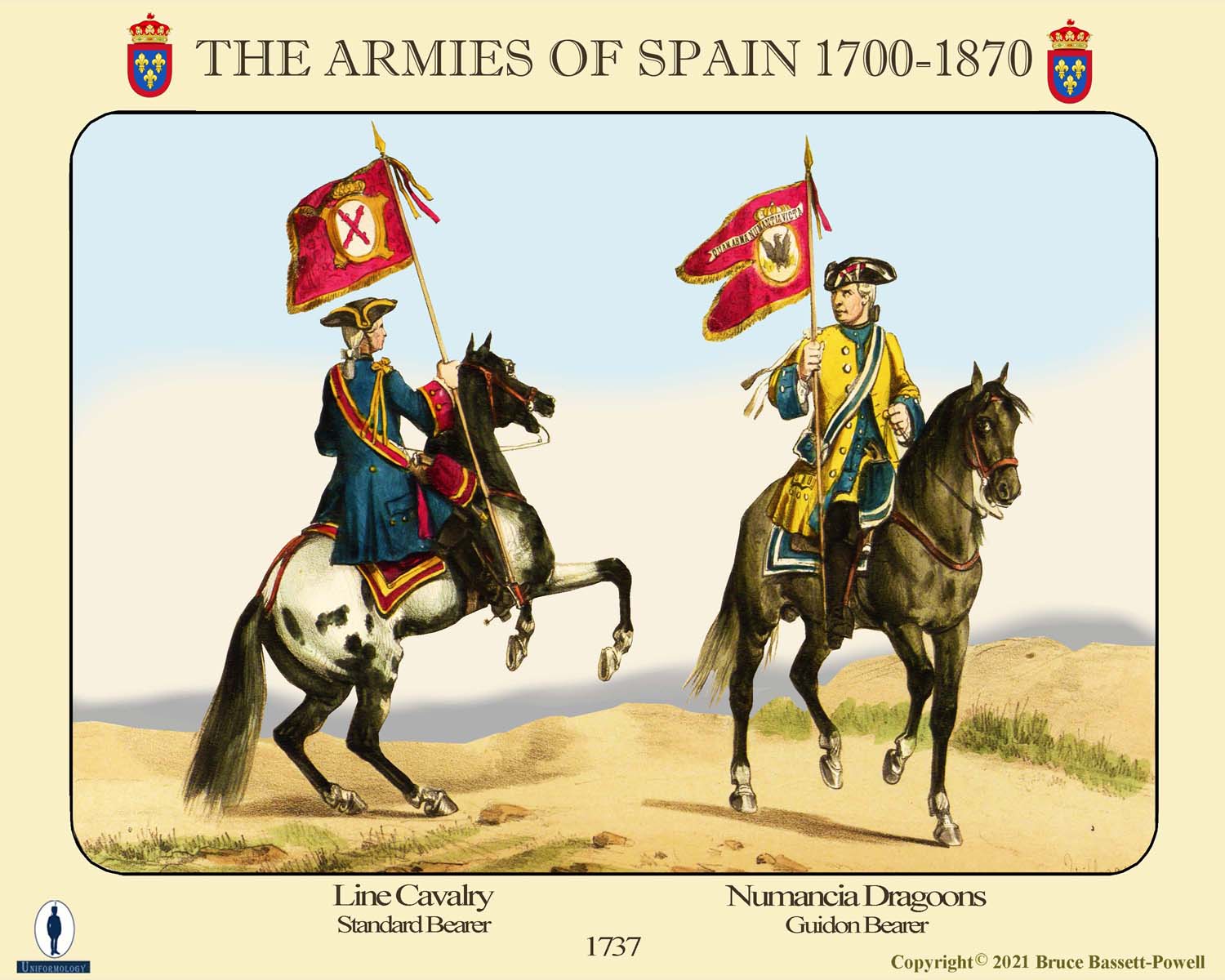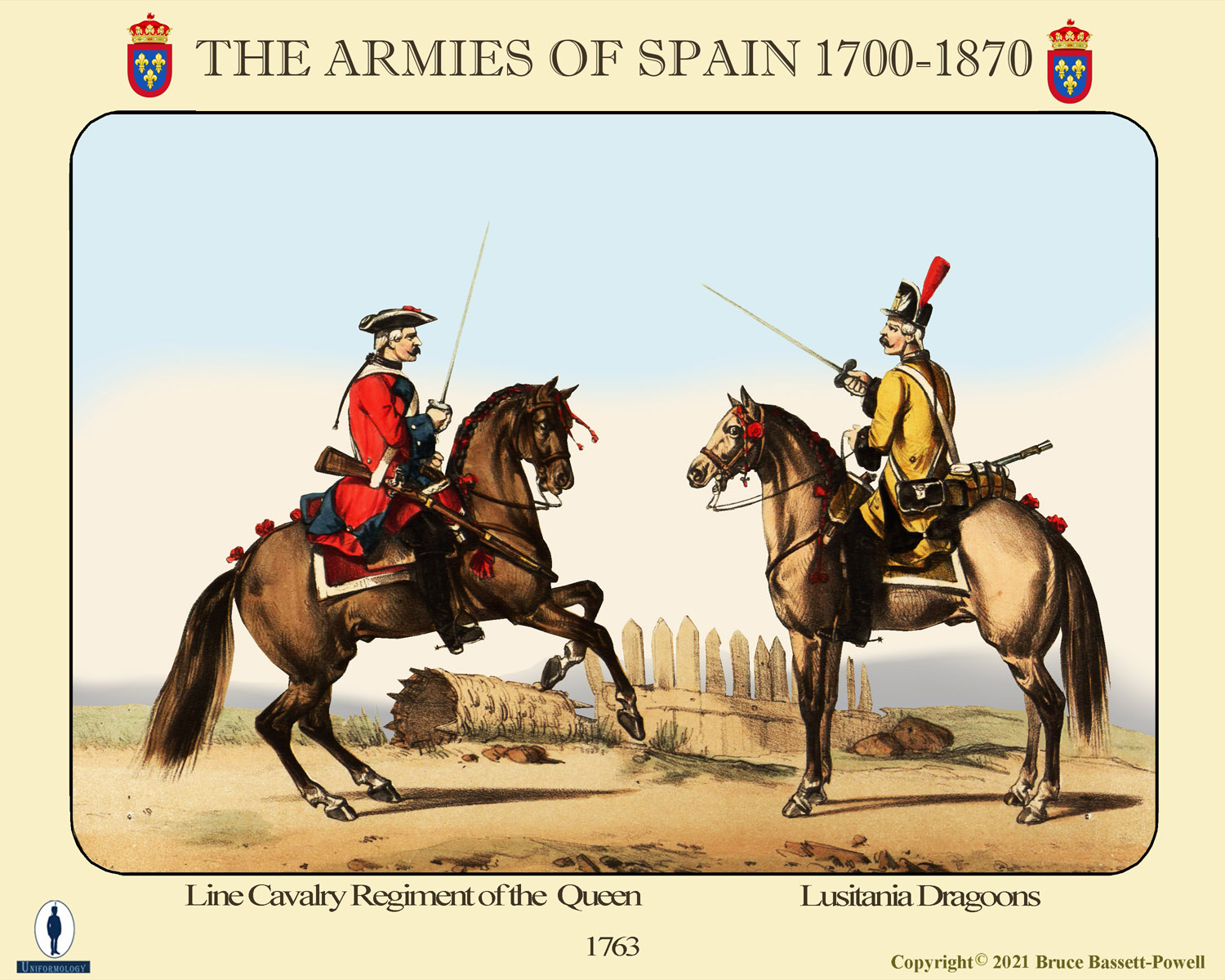THE WORLD OF MILITARY UNIFORMS
1660-1914
THE ARMIES OF SPAIN
1700-1860
By José Rubio y Villegas
SPAIN 1700-1763
By the end of the seventeeth century, Spain was still the largest imperial power in the world. Within Europe, its influence had waned due to numerous military defeats. However, it still held it's vast American, North African and Asian possessions. In 1700 Charles II of Spain died, and the duc d’Anjou, grandson of Louis XIV of France, his heir became Philip V of Spain. Britain and Austria were in complete opposition, fearing French hegemony in Europe. Thus began the War of Spanish Succession in 1701.
The Anglo-Austrian armies invaded Spain and the Netherlands and during the first ten years of the war, inflicted decisive defeats on the Franco-Spanish Armies. Although the British were able to capture Gibraltar, they and their Austro-Portugese allies suffered a severe defeat at Almanza (1707). Despite this Spain continued to suffer and on the death of the Spanish Queen Maria Luisa in 1714 their appetite for war subsided. It lost all its possessions in Europe, most noteably in the low countries and Italy by the treaties of Utrecht and Maastricht (1714). One inconguous result was that Spain had become somewhat united as an entity under the Spanish crown for the first time.
The years of after the War of Spanish Succession saw the rivalry between Britain and Spain intensify, especially in the Caribbean when the "War of Jenkins' Ear" was fought. However, Spain did recover some of its Italian possessions and significantly, Philip Vth's wife Isabella saw he son become King of Naples in 1731. More gains were made in Italy during the War of Austrian Succession under King Ferdinand of (1746-1759) although attempts to recover Gibraltar failed several times.
Spain concentrated all its efforts on the Americas between 1750 and 1763. The Seven Years War saw France removed from North America. The British also occupied Havana for most of the year of 1762, a major blow to Spain. By the end of the war, Spain was seeking an accomodation with Britain and hostilities decreased for a while until 1776 when America became the focus once more.
Spanish Army Uniforms 1700-1763
The Spanish Bourbon army was influenced by the Austrian and Bourbon affinity to white as its basic colours. The infantry at first wore coloured coats such as green, red and purple (colours associated with regimental names) until late in the first decade when white with coloured cuffs became dominant. The Royal Bourbon Regiments (like the French) continued to wear blue with red facings. The cavalry wore more colourful uniforms. Dragoons were distingushed by their unique grenadier style caps for much of the war.
About the Artist
José Rubio y Villegas (1847-1898) (Not to be confused with José Villegas y Cordero) was a Spanish military artist of the 19th Century. He was commissioned to paint images of the Army from historic times by General of the Armies D. José Marchesi Director of the Royal Spanish Armories in 1861. He produced two albums, one of Infantry and one of Cavalry consisting of nearly 150 prints portraying the Spanish Army from ancient times until 1861.
This series reproduces his paintings from Spanish Bourbon times to 1861. The plates have been carefully remastered to reveal much of the detail with the descriptions translated into English
----------------------------------------------------------------
THE INFANTRY
THE CAVALRY
NEXT
FROM THE SEVEN YEARS WAR
TO THE FRENCH REVOLUTION


